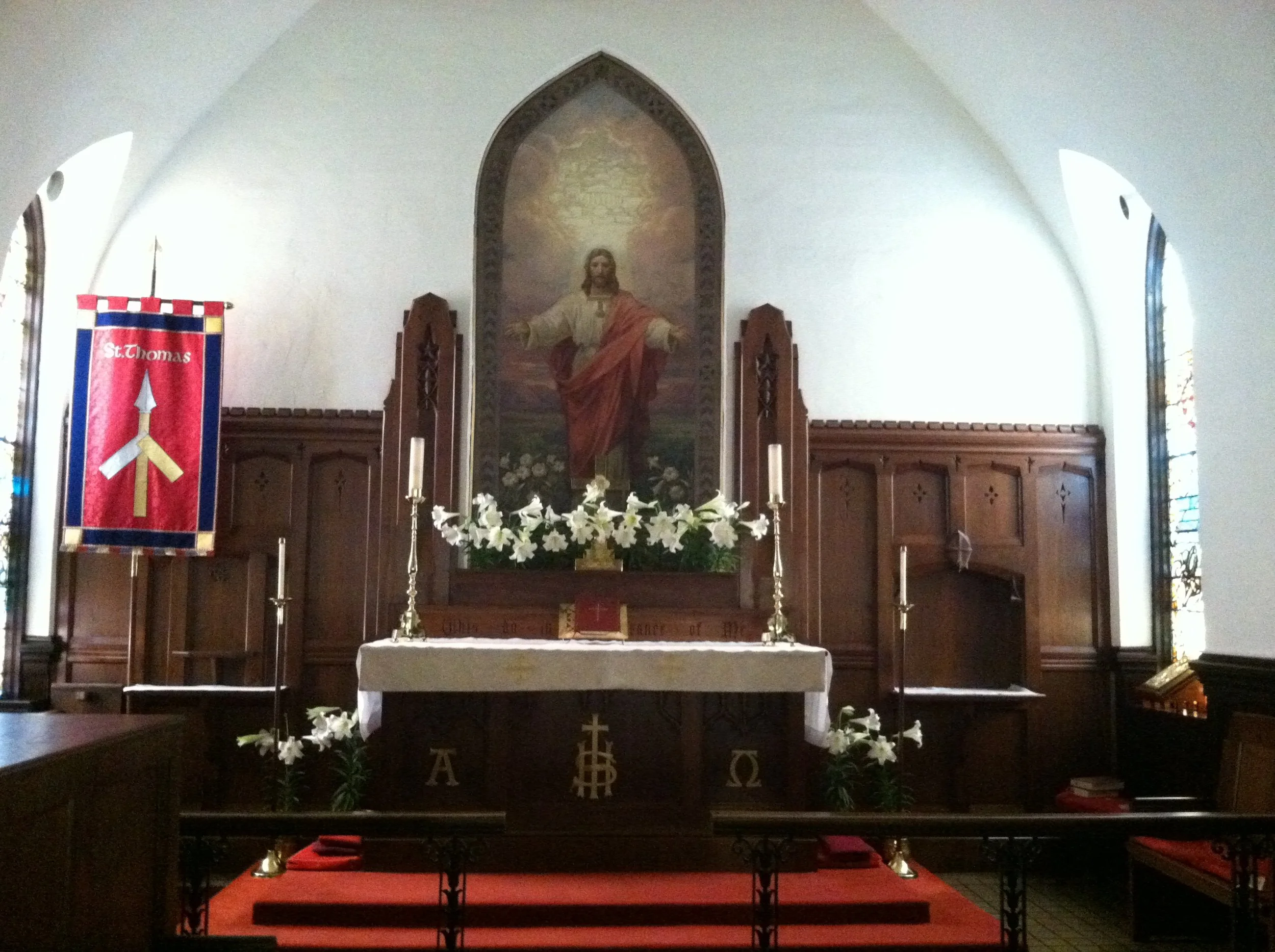
Our History and Our Building
The Episcopal Church in Virginia formed Holston Parish in 1841. The bounds of this parish included all of Washington County. Those early worshipers met at the courthouse, organized themselves and formed a congregation which they named in honor of the New Testament saint and apostle Thomas. The first building was consecrated by Bishop John Johns on October 22, 1846.
The fire of 1924
When fire broke out next door to St. Thomas on December 27, 1924, it was also no time before the church building was reduced to ashes. The congregation moved quickly to rebuild. The Roanoke architectural firm of Smithey and Tardy was engaged for design work. It was completed in 1925 at the exorbitant cost of nearly $30,000!
Fortunately, two memorial stained glass windows had been removed from the old structure for repair. One window honors Confederate Gen. Joseph E. Johnston who grew up in Abingdon, and the other is in honor of his nephew, Lt. John Preston Johnston who was killed in the battle for Contreras, Mexico, in 1847. They now stand to either side of the altar.
A Roosevelt Connection
A frequent visitor and sometimes resident in Abingdon was Elliott Roosevelt, father of Eleanor Roosevelt. “Taking rooms” in the house next to the church, he sang in the choir and made a generous gift to the parish of a large lectern Bible. He also gave a lectern Bible for a chapel in Damascus. Now kept in the Parish Library, it was given in memory of his wife Anna Hall Roosevelt. A lectern Bible was given by Eleanor Roosevelt in 1925, in memory of her parents, to replace one destroyed in the fire.
The painting over the altar is oil on canvas by an artist unknown to us. Look closely above Jesus’ head and you’ll see the Holy City, the heavenly Jerusalem, coming down from the clouds.
To the left of the altar is the parish banner with the shield of the apostle Thomas. Legend has it that Thomas was a carpenter and “built” the Church in India, both preaching the Gospel and building a house of worship. He died for his faith there, being run through with a spear. His shield comprises a symbol of his ministry (the carpenter’s square) and his martyrdom (the spear).
The current church building is based on a 14th century English Tudor Gothic chapel. The chancel layout is the traditional “split chancel” design popular after 1840 in England and later in this country. (The deep chancel and choir areas would have been late additions to a 14th century chapel.)



